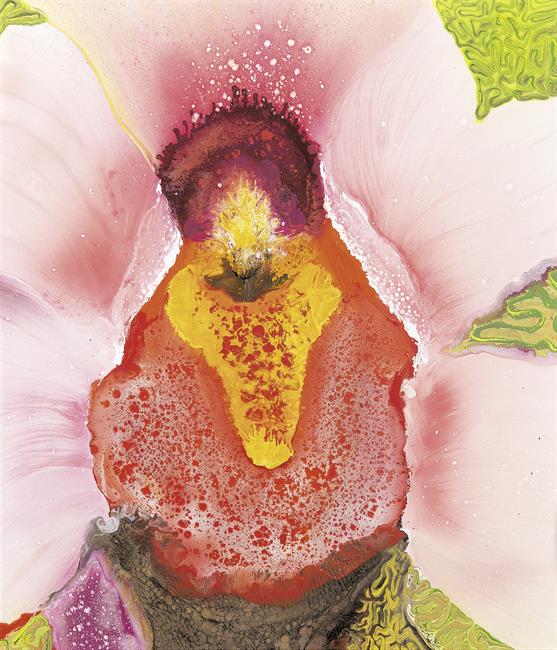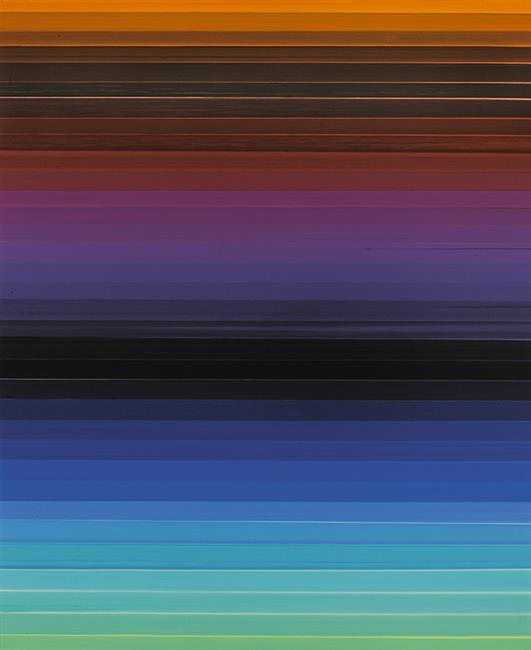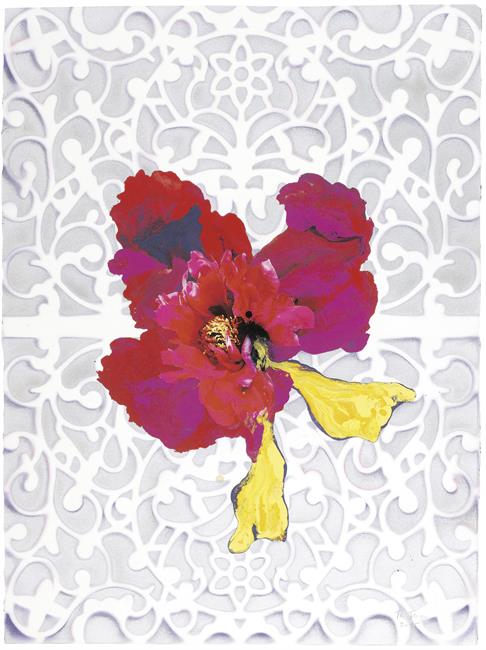In the complex oeuvre of Austrian-born Thierry Feuz, who studied arts in Switzerland and currently lives and works in Geneva, colour is a ubiquitous instrument of creation and unites his series of paintings, which, at a first glance, seem to be heterogeneous. With an almost exuberant creativity, Thierry Feuz produces a universe of colour that is dominated by a great colouristic sensibility and a nearly explosively articulating intoxication of colour.
“Colour has got me. I no longer need to chase after it. It has got me forever. I know it. That is the meaning of this happy hour: colour and I are one. I am a painter.”[1] This quote by Paul Klee, one of the most important protagonists in the visual arts of the 20th century, could have equally been proclaimed by Thierry Feuz, born in Vienna in 1968.
With his technically brilliant, perfectly balanced pictorial compositions, Thierry Feuz does not make it easy for his observer. Virtuously and in unbelievable versatility, Feuz oscillates between a universe structured like a honeycomb with endless galaxies, bright stars, planets, moons, comets and meteors, as well as life scale or zoomed in flowers, blossoms and other vegetal elements, and finally, micro and nano cosmos with microorganisms. Alongside, as a virtually formal counterpoint, completely abstract painting series like “Chromolux” or “Technicolor”, can be found. What all paintings have in common, though, is a universal sensorium for peace and the greatest possible clarity.
Thierry Feuz creates a new, complementary, artificial imagery that arises from his biomorphic shape vocabulary; his imagery is complemented by strictly linear, already 3-dimensional images (works of the “Technicolor” series) or by works inspired by the technique of action painting (“Chromolux” series). Thereby, the artist quite naturally overcomes the borders between figuration and abstraction; solely the human being is not present in his divergent pictorial universe.
Feuz’ elementary, organic visual vocabulary seems to recur to imaginary flower meadows, tropical gardens and cosmic orders with psychedelic connotations: flower stems curved like reptiles carry gracefully formed and delicately nuanced calyces and corolla of a fascinating beauty and unspecified biological varieties. Undulating structures, patches, spots and sprinkles complete the artistic view through the microscope or telescope, affect our creative imagination and, in a symbiosis with the manifold vegetative forms, equally lead back to the origins of life and the universe.
“It is as if one is witnessing the formation of the universe before the advent of human beings […].”[2] “The organic paintings are close-ups”, explains Feuz, “[as though] you have entered a landscape and the details of a strange, humid, wet, and dangerous life have become visible”[3].
Thierry Feuz superbly overcomes all technical challenges an artist has to face in his paintings. He perfectly masters the repertoire of silent artistic nuances. Thierry Feuz paints horizontally, with the paintings laying on a table. He creates an already wet picture plane with fluid acrylic or varnish. All colours have to be applied before the painter more or less elaborately works the composition with diverse tools – brushes, palette knives, hair combs, little sticks, knives, sprays or air nozzles –, before drying. With this technique, Thierry Feuz has to act very carefully and precisely, as this method does not allow a correction at a later stage.
As regards content, Feuz follows up on such existential subjects as beauty or death, creation or decay. The painter’s focus on fundamental issues of human existence filters the meaningful from the mundane and builds a solid ground for multicoloured images of clear colouring and immaterial luminosity. Thierry Feuz summarises his artistic credo in the following quote: “By making art I can live more sensitively but it also costs me a lot of energy.”[4]
Andrea Schuster
[1] Paul Klee: Diaries 1898-1918. ed. by Felix Klee. Cologne 1957, p. 307
[2] Marino Buscaglia, in: exhibition catalogue “Thierry Feuz. Psychotropical. 2002-2003. Paintings”, Kashya Hildebrand Gallery, New York 2003, [n.p.]
[3] Nicole Rudick, in: exhibition catalogue “Thierry Feuz. Psychotropical. 2002-2003. Paintings”, Kashya Hildebrand Gallery, New York 2003, [n.p.]
[4] Oliver Orest Tschirky: “Eternal Journey to the Inner Truth”, in: exhibition catalogue “Thierry Feuz”, Galerie UNE, Auvernier 2010, p. 10-13, here: p. 13




